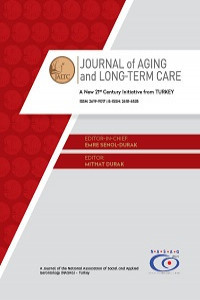Building a cohesive partnership: Perspectives of staff caregivers on improving self-care independence among older adults living in long-term care facilities
Building a cohesive partnership: Perspectives of staff caregivers on improving self-care independence among older adults living in long-term care facilities
This study was to understand how to establish a cohesive partnership aimed at improving self-care independence among older adults living in long-term care facilities. This was a qualitative research design. Results found that to build a partnership, staffs indicated three major elements are essential: (1) prior discussion, (2) building trust, and (3) reporting conditions of residents voluntarily. However, this study observed that family caregivers’ attitudes and health or characteristics of older adults were of influence frequently affected older adults to regain/maintain self-care independence. To decrease the negative impact, the staffs should have attitudes of compassion, empathy, and caring.
Keywords:
Self-Care, Aged Long-Term Care, Caregivers, Partnership,
___
- Askerud, A., & Conder, J. (2016). Nurses’ role in longterm condition care. Kai Tiaki Nursing New Zealand, 22, 16-17.
- Beedholm, K., Frederiksen, K., & Lomborg, K. (2016). What was (also) at stake when a robot bathtub was implemented in a Danish elder center. Qualitative Health Research, 26, 1424-1433.
- Chan, A., Malhotra, C., & Ostbye, T. (2011). Correlates of limitations in activities of daily living and mobility among community-dwelling older Singaporeans. Ageing & Society, 31, 663-682.
- Chang, S. H. (2009). Beliefs about Self-Care among Nursing Home Staff and Residents in Taiwan. Geriatric Nursing, 30, 90-98.
- Chang, S. H., Fang, M. C., & Chang, H. Y. (2010). Enhancing Three Bliss Concepts among Nursing Home Elders in Taiwan. Journal of Clinical Nursing, 19, 682-690.
- Chang, S. H. & Yu, C. L. (2013). Perspective of Family Caregivers on Self-Care Independence among Older People Living in Long-Term Care Facilities: A Qualitative Study. International Journal of Nursing Studies, 50, 657-663.
- Clair, J., Beatty, J. E., & MacLean, T. L. (2005). Out of sight but not out of mind: Managing invisible social identities in the workplace. Academy of Management Review, 30, 78-95.
- Cramm, J. M., Hartgerink, J. M., de Vreede, P. L., Bakker, T. J., Steyerberg, E. W., Mackenbach, J. P., & Nieboer, A. P. (2012). The relationship between older adults’ self-management abilities, well-being and depression. European Journal of Ageing, 9, 353-360.
- Guba, E. G., & Lincoln, Y. S. (1989). Fourth Generation Evaluation. CA: Sage, Newbury Park.
- Jones, F., Postges, H., & Brimicombe, L. (2016). Building bridge between healthcare professionals, patients and families: A coproduced and integrated approach to self-management support in stroke. Neuro Rehabilitation, 39, 471-480.
- Sacco-Peterson, M., & Borell, L. (2004). Struggles for autonomy in self-care: the impact of the physical and socio-cultural environment in a long-term care setting. Scandinavian Journal of Caring Sciences, 18, 376-386.
- Weman, K., Kihlgren, M., & Fagerberg, I. (2004). Older people living in nursing homes or other community care facilities: Registered Nurses’ view of their working situation and co-operation with family members. Journal of Clinical Nursing, 13, 617-626.
- ISSN: 2619-9017
- Başlangıç: 2017
- Yayıncı: Ulusal Sosyal ve Uygulamalı Gerontoloji Derneği
Sayıdaki Diğer Makaleler
Su Hsien CHANG, Ching-len YU, Mei-chen CHEN
Reducing social isolation and improving the quality of life in older adults
The effect of GeroAtlas60+ Refresher University in preserving individual and community health
İsmail TUFAN, Sevnaz SAHİN, Melis OKTUG ZENGİN, Melike TAMER KOSE, Martin PALLAUF, Eva SCHULC
Community centers of local governments for retirees: The case of Istanbul
The characteristics and life preferences of Turkish older adults
